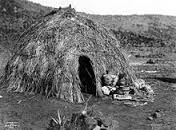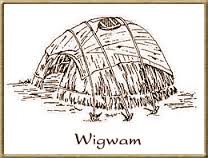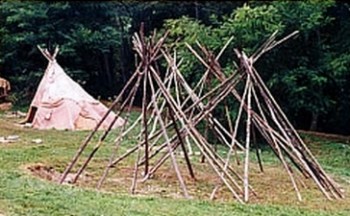The Indians and the Tipi
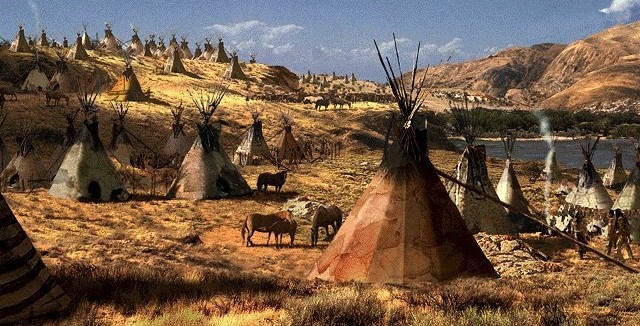
The Dakotic word tepee means to live inside. Teepee, Tepee, Teepee means in the language of the Sioux Indians used as an apartment / room to live in, a home.
TI = apartment or life
PI = inhabit, live
The tipi, which most people only know from the Native Americans, also existed in a more primitive form here in Europe during the Paleolithic Age. This tipi-like fire tent was named «Lacalled vvu ». But this was a much smaller, cone-shaped tent. The shell was made of thick skins and leather skins. The Tipis of the indigenous people of North America only became known to us with the expeditions of the Spaniards when they penetrated the North American steppe.
The term tipi is also incorrectly used for other tents by nomadic ethnic groups. However, the tipi has typical features that clearly stand out from these other, rather primitive and smoky dwellings. What many do not know is that the shape of a tipi is not symmetrical, but a cone sloping backwards. On the slightly steeper side, the tipi has smoke flaps that serve as a smoke outlet for the fire. We often hear the term “wigwam” in connection with the Indian tents. This designation applies to the tents of the eastern Indian tribes. The wigwam is a dome-shaped hut that has been covered with grass and matting.
The first fabric tipis as we know and use them today did not appear in America until around 1800. Since the canvas is lighter than leather, the Indians began to sew larger teepees. They reached a diameter of 6-7m and even 9m. In the past, the Indians used to transport their tents with the help of dogs and simple sliding tows, a type of sledge. Later they used horses for the transport, which were first introduced by the Spaniards and first hunted by the Indians and then used as pack animals and mounts. They made transport easier and greater distances could be covered.
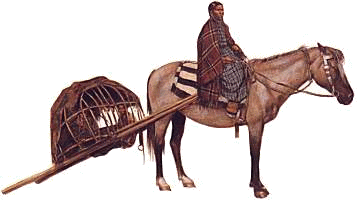
Another major influence on the spread of today's tepees was the relocation of many tribes that originally inhabited the more northern and eastern areas of the Americas (the Cree, Blackfoot, Dakota, Arapah and other tribes). Beginning of 19. By the 19th century, most of the so-called prairie Indians had settled in the new hunting grounds, where they appreciated the advantages of the modern tepee, the simplicity of construction, and easy transportation.
Originally the tents were made from bison skins. After these wild cattle were exterminated, the leather was replaced by canvas, with the same cut being used with only minor deviations. Almost without exception, the tipis were oriented with the entrance to the east facing the rising sun. The steeper back defies the strong westerly winds, which predominate on the open plains similar to ours. The sun is the giver of all life and was therefore very much appreciated by the Indians.
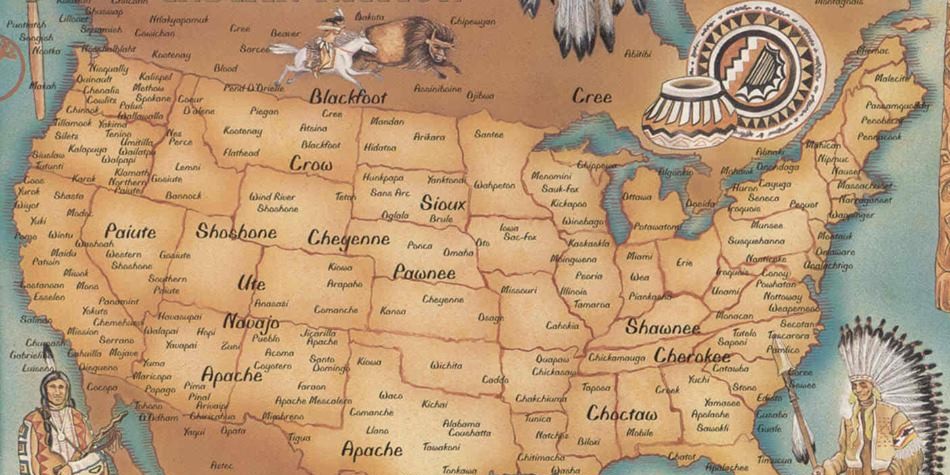
We differentiate between two basic types according to the number of bars. For example, the Crow or Blackfoot tribes used four poles. This tipi was cut differently from the Dakota Indian three-pole tent. The cutting is easier and more practical and has therefore established itself in modern tipis.
The size of the tipi adapted to the corresponding use. A children's teepee had a diameter of up to 2.5m, even small teepees were built for their favorite dogs. The adults lived in tipis with a diameter of up to 5 m. The typical family tipi was about 5.5m in size. Only with the tent sheets made of fabric were tipis built with a diameter of over 7m.
Source: Laubin
